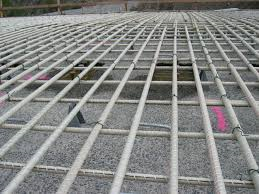https://www.americanfiberglassrebar.com/default.aspx
USE FRP REBAR
Concrete Susceptible to Corrosion
• Waste Water Treatment Facilities
• Swimming Pools
Tunneling & Mining
• Sequential Excavation or NATM Tunneling
• Deep Foundation Tunnel Boring Machine “Soft-Eye” Opening for Launch & Reception
• Temporary Reinforcement
• Rock Bolts
Building & Historic Preservation
• Historic Preservation - Restoration & Pinning of Stone Elements
• Architecture Concrete Elements
• Slabs
Exposure of Concrete to De-Icing Chlorides
• Bridges & Railings
• Median Barriers
• Parking Structures
• Approach Slabs
• Continuously Reinforced Concrete Paving
• Precast Elements
• Salt Storage Facilities
Masonry Strengthening
• Seismic, Wind or Blast Strengthening of Unreinforced Masonry
• Strengthening for “Event Loading” of Clay & Concrete Masonry
Exposure of Concrete to Marine Chlorides
• Coastal Construction exposed to Salt Spray
• Sea Walls, Wharfs & Dry Docks
• Desalinization Intakes
• Port Aprons
Exposure of Concrete to High Voltages & Electromagnetic Fields
• Light & Heavy Rail
• High Voltage Substations
• Radio Frequency Sensitive Areas
• Cable Ducts & Banks
• Hospital MRI Areas
• Aluminum Smelters & Steel Mills
• High Speed Highway Tolling Zones
• Airport Radio & Compass Calibration Pads
American Fiberglass Rebar products
(702) 567-2514 Direct or (885) 6409861 Toll Free. Email
sales@americanrebar.com
American Concrete Institute (ACI)
440.1R-06: Guide for the Design and Construction of Structural Concrete Reinforced with FRP Bars
440.5-08: Specification for Construction with Fiber-Reinforced Polymer Reinforcing Bars
440.6-08: Specification for Carbon and Glass Fiber-Reinforced Polymer Bar Materials for Concrete Reinforcement
440.3R-12: Guide Test Methods for Fiber-Reinforced Polymer (FRP) Composites for Reinforcing or Strengthening Concrete Masonry Structures
440.2R-08: Guide for the Design and Construction of Externally Bonded FRP Systems for Strengthening Concrete Structures
440.7R-10: Guide for the Design and Construction of Externally Bonded Fiber-Reinforced Polymer Systems for Strengthening Unreinforced Masonry Structures

